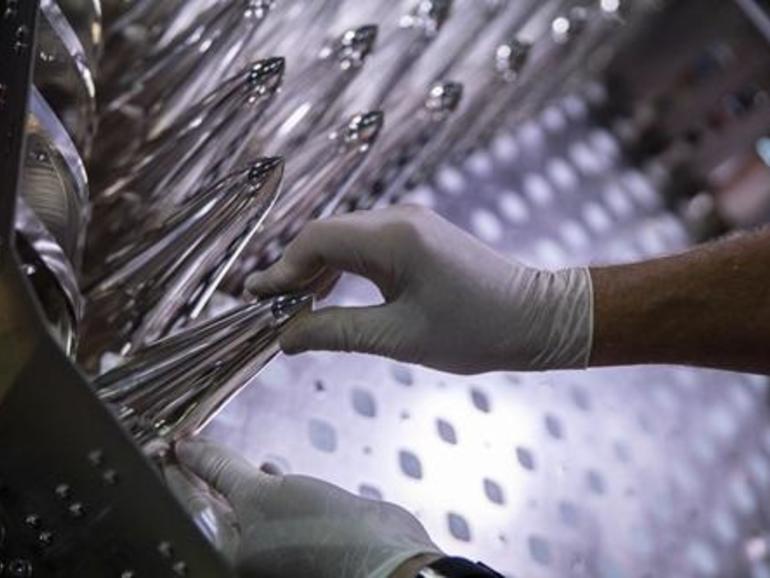CSIRO’s phased array technology will be used by Quasar’s ground station service to communicate with hundreds of satellites all at once.
Image: CSIRO
Commonwealth Scientific and Industrial Research Organisation (CSIRO) has teamed up with Vocus, Main Sequence, the Office of the NSW Chief Scientist and Engineering, Fleet Space Technologies, Saber Astronautics, and Celarbox Systems to help launch space communications startup Quasar.
CSIRO chief Larry Marshall boasted Quasar will develop an “as-a-service” solution to allow ground stations to talk to hundreds of satellites simultaneously and access data from satellites in low, medium, and geostationary orbit.
The solution will be underpinned by CSRIO’s phased array technology, which the organisation developed for its radio telescopes, including its own WA-based Australian Square Kilometre Array Pathfinder (ASKAP) telescope.
“CSIRO’s phased array technology revolutionised radio astronomy by enabling ASKAP to see enormous portions of the sky at once — about 30 times the area that conventional telescopes could see,” Quasar founding director and CSIRO commercialisation specialist Ilana Feain said.
“I’m excited to see the next evolution of this technology empower satellite businesses and their downstream industries.”
The solution will be designed to help overcome congestion, which is expected to rise over the next decade as more satellites are launched to support a growing demand for satellite data in applications such as bushfire and flood monitoring and connecting Internet of Things networks.
“Space is the highway of the stars, but current ground station technology is the equivalent of one-lane on-ramps,” Quasar CEO Phil Ridley said.
“By making it possible to communicate with hundreds of satellites simultaneously, we’ll be able to ensure the thousands of satellites launching over the next decade have a way to call home efficiently.”
In other space news, the European Space Agency (ESA) and the Australia Space Agency will jointly develop a AU$70 million deep space antenna in the Western Australian town of New Norcia, 140 kilometres north of Perth. The dish will be the ESA’s second dish in New Norcia and is expected to be operating in 2024.
“The dish will play a crucial role in supporting ESA’s deep space missions, working in concert with other antennas based in Argentina and Spain to provide uninterrupted communications with spacecraft exploring the galaxy, including missions to Mars,” the Australian government said.
“The new model will feature cutting edge deep space communication technology, including a cryogenically cooled ‘antenna feed’ which can increase data return by up to 40%.”
Related Coverage
Industry wants to make space more accessible to grow Australia’s talent pool
Some firms say it’s a matter of national security.
Australia’s space sector wants policies introduced to ensure satellite sovereignty
But the community wants it done in a way that will not hurt the sector’s growth.
Gilmour Space and Fleet Space to lift small satellites into orbit in 2023
Gilmour Space and Fleet will launch half a dozen small satellites to orbit in 2023, meanwhile, the Australian Space Industry and Questacon have opened the doors to the Australian Space Discovery Centre, which will also be home to a mission control centre.
CSIRO paints why Australia needs its own national space capability
The national research agency also touted that the country is at an advantage because it lacks ‘baggage’.



